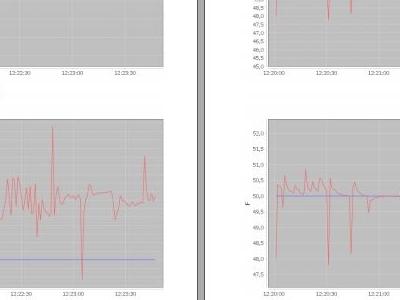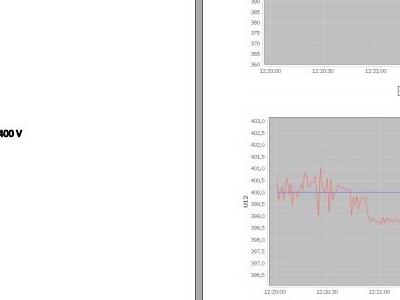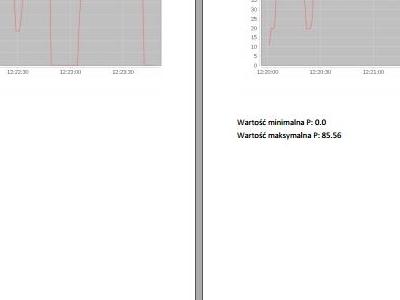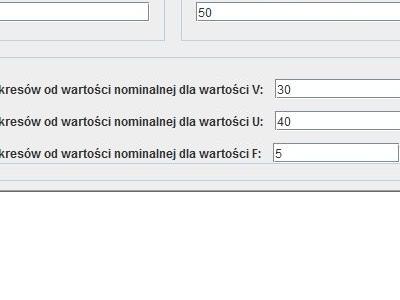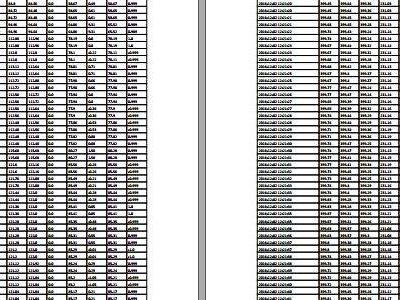- Details
Application for generating reports
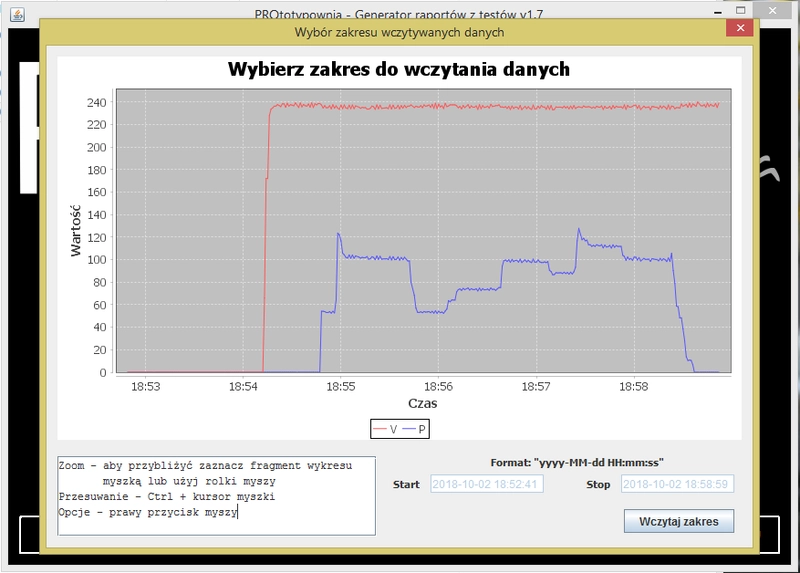 Generating a load test report has never been so easy! Download the voltage and current figures and in 3 steps generate a professional test report in 2 versions: complete with all data (adapted to the needs of the service) and compressed, containing charts and the most important figures (adapted to the needs of the Investor). The application, in the full (general) version, is available for free.
Generating a load test report has never been so easy! Download the voltage and current figures and in 3 steps generate a professional test report in 2 versions: complete with all data (adapted to the needs of the service) and compressed, containing charts and the most important figures (adapted to the needs of the Investor). The application, in the full (general) version, is available for free.
In a few days, the Prototypownia company will publish an application for generating reports on tests carried out by load banks. As a reminder, the test using a load bank involves simulating the operation of the receivers, often while analyzing the behavior of the power source. The most frequently tested devices and systems: power generators (also working in synchronization), UPSs, electrical switchgears, ATS systems or power transformers and entire guaranteed power supply systems (including cable connections).
1. What data do we receive during the test?
All data on the quality of the produced power supply is collected and pre-analyzed by the built-in power analyzer. The most commonly used provides data such as: current intensity at each phase, voltage (phase and interphase), frequency, reactive, active and apparent power, phase shift. In addition, the load bank always collects temperature data.
2. Why is it worth knowing the voltage and current characteristics of the guaranteed power supply system?
Data on the quality of electricity produced and taken over by receivers is extremely important for the entire system. On this topic another article could be created. In short, generators and all other power generation units, UPSs or power transformers can give off electricity with different characteristics such as voltage or frequency. What happens in that case?
A large part of current receivers, such as specialized machines or simply computers, are sensitive to any voltage surges or other parameters such as frequency and can be damaged if the power supply quality is inappropriate. In addition, there are possible interruptions in operation, uncontrolled restarts and shutdowns, or, eventually, even damage to other power system components.
Knowing the data on the quality of electricity not only avoids failures and downtime, it is an important information for service, assembly and design teams: it allows to design and build, for example, an electrical switchboard that will eliminate irregularities and avoid losses. In addition, it can be a bargaining chip in a dispute with the grid energy operator in the event of a malfunction of the power transformer or a simple way to check whether the unit we have just purchased meets our actual requirements and complies with the declared specification.
3. Test Report Generator - 3 Simple Steps to a Full Report
How does it work? A load bank with a built-in power quality analyzer collects data during the test. During the test, all power quality data is available in real time on the load bank’s display in the form of graphs and numbers. What happens next? The data is downloaded to a USB stick (in the case of stationary load banks, it is enough to use a network cable) and uploaded into the application generating the reports. The service technician enters the data of the tested machine/system, own comments, the power of the device/system and several others. In the last step, the service technician can select the parameters they want to present in the finished report.
4. Generating sets - classification G1, G2, G3 and G4 classes. Is it automatic?
Generators have their own characteristic parameters such as rated and maximum power (instantaneous), output voltage. Rated power includes three types: COP (continuous power), often determined without an hour limit, which the unit is able to provide continuously for an unlimited period of time in the year (however, it is worth paying attention to the use of aggregates: for continuous or emergency operation), maximum instantaneous power PRP (Prime Power) - the highest power available by the unit and LTP (Limited Power) specified for the time limit.
The execution class indicates what exact voltage a given generator produces (amplitude, shape, frequency – the exact value and stability of these parameters). Genset execution class: G1, G2, G3 and G4 determine the impact on the environment, the quality of electricity produced and often the type of location in which a given unit can be permanently installed.
Class G1 ensures compliance with the requirements of consumers who perform basic functions, their failure does not entail serious consequences and who are not sensitive to spikes in electrical energy parameters (e.g. lighting, electric heating, etc.). It is worth adding here that the G2 class already meets the requirements in terms of the quality of electricity supplied, which are similar to the requirements specified in relation to public electricity networks (e.g. lighting, pumps, fans, cranes, etc.).
In the case of in load changes, temporary deviations from the nominal values of voltage and frequency are allowed. The G3 requirement class is already suitable for consumers with increased qualitative requirements for delivered electricity (e.g., UPS, telecommunications systems, etc.).
The highest currently used (common) class of power generators is G4. The G4 class concerns the power supply of receivers with high requirements in the scope of the supplied electricity. In Poland, the G2 and G3 generator classes are the most commonly used and available. The use of the G3 class already requires, among other things, the use of electronic speed control. The G3 class units are often a bit more expensive. The G4 class are not included in the price lists of the largest manufacturers, and their use takes place mainly in prestigious Data Center and other facilities requiring high precision power parameters. Of course, you can get them on special order.
You bought a G3 unit and would like to check if you overpaid?
Yes, it is possible to check this fact automatically, without interference from the supplier. All you have to do is run a test and generate the appropriate report. The classification will perform itself.
5. What does the application provide for generating reports from tests carried out with load banks?
Two independent reports protected from third party interference
- complete data on power quality displayed on time and macro charts, information on deviations and minimum and maximum values, complete data tables from the selected period
- a readable *.pdf format for each interested person
- generator classification in the context of G1, G2, G3 and G4
- full, legible information about current, voltage, frequency, phase shift and others generated by the generator set and flowing to the receivers
- sampling 1 to 20x per second
- unlimited possibilities of application development in a dedicated version - depending on the analyzer model used
Check some of the capabilities of the Prototypownia company Test Report Generator in the following application:


